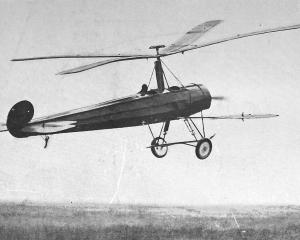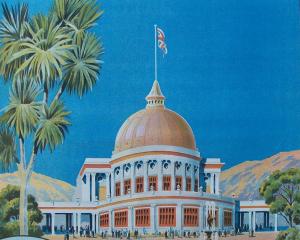
It is a strange thing that the kaingas of New Zealand should send warriors to fight for the pakeha beside the Pyramids, and over against the plain of Troy, and last on the classic fields of France and Flanders.
Sir George Grey and other makers of our ancient Maori wars may look down wondering; — I hope it is permitted them.
An imaginative writer in the London Times traces the martial pilgrimage of one of these "dark-skinned fighters" from Lake Taupo to his final hours in a French military hospital.
It is a moving story, weak only in Maori place-names — "Waioura", and the like, a fault that may be forgiven.
Here is the close:—"He lay for two days, but his spirit was already half round the world to the quiet lake-side where the white sand is washed by waters as blue as the clear sky. He thought himself back at Taupo sitting under the shade of the manuka bushes. The steam from the hot pools in the ti-tree was wafted across the water, and the boiling mud geysers chuckled and gurgled like goblins as he told of how he had fought the Turk and the Germans. The nurse at the other end of the ward was suddenly conscious of soft singing, and as she came along the passage-way between the beds she heard that the voice was Hone’s. She, too, knew the tune, but the words were strange to her. ‘He roa te wa ki Tipirere, he tino mamao’ he sang. And then as the little boiling pools chuckled and laughed softly and the note of a distant bell-bird came across the arm of the lake, he closed his eyes, and his spirit went to the place where all good warriors go.’’The song was "Tipperary". The French have their version, why not the Maoris? — Civis.
• In connection with the Women’s Learners’ Gallery, established by the local Telegraph Department, it is interesting to learn that, notwithstanding that these women have been connected with the department only during the past two months as learners of telegraphy, for which they are being paid at the rate of £40 a year, they have, in addition, been paid a war bonus based on their salary, which, at the remuneration mentioned, amounted to £1 7s.
As an extra consideration these young women, whose hours are from 9 a.m. till 12 o’clock, and from 1 to 4 p.m., are provided with the requisites for making morning and afternoon tea on the premises.
If any of these learners fail to pass the examination set them at the expiration of six months, they will not be retained in the department’s service.
• "America is the land of the motor car, and California is the motorist’s paradise,’’ says Mr C. L. Thomson, of Dannevirke, who has just returned from an interesting trip to the United States. In California it is estimated that one out of every 13 inhabitants owns a motor car, while in Passenena, a millionaire suburb of San Francisco, the proportion is one car to every six persons. The roads are magnificent, one highway constructed in concrete and asphalt running the length of California from the north to the south Pacific coast. The Lincoln highway — a concrete and asphalt road from New York to San Francisco, 4000 miles — promises, when completed, to be one of the greatest motor runs in the world. — ODT, 30.9.1916.
• COPIES OF PICTURE AVAILABLE FROM ODT FRONT OFFICE, LOWER STUART ST, OR WWW.OTAGOIMAGES.CO.NZ











